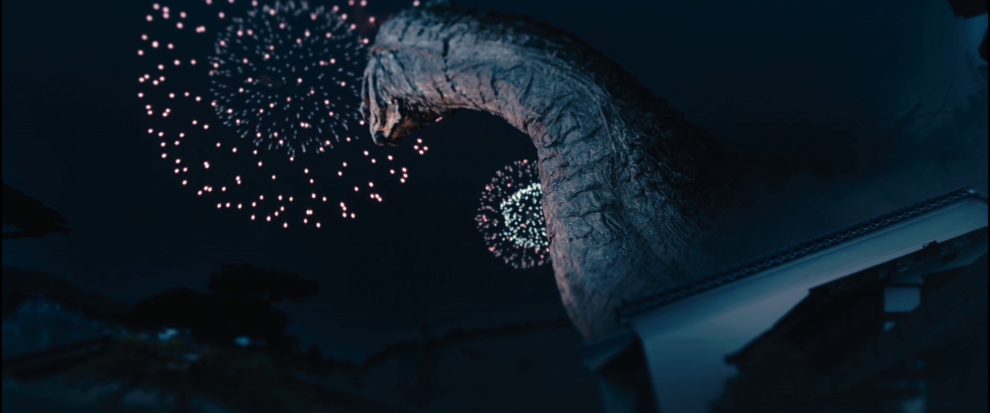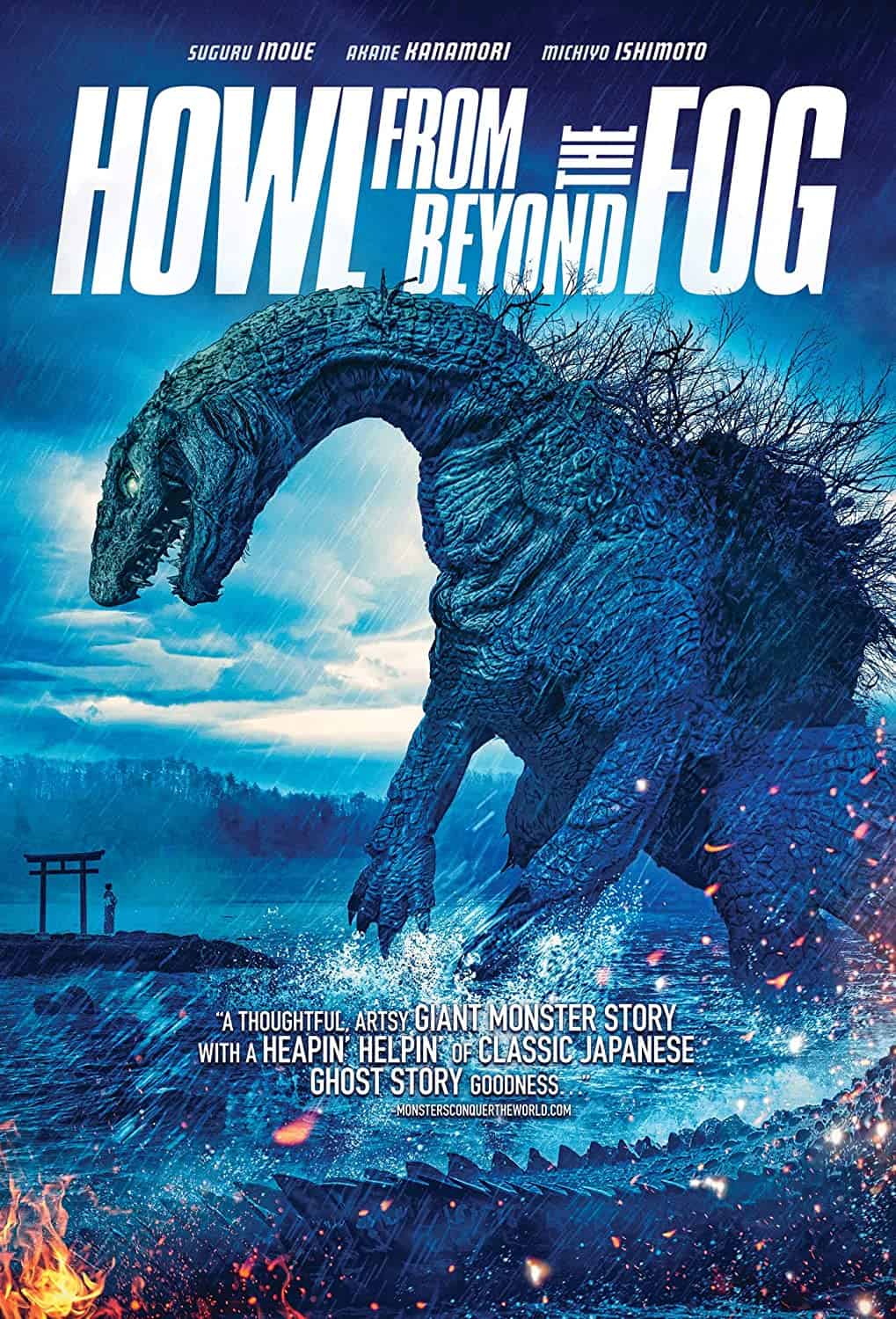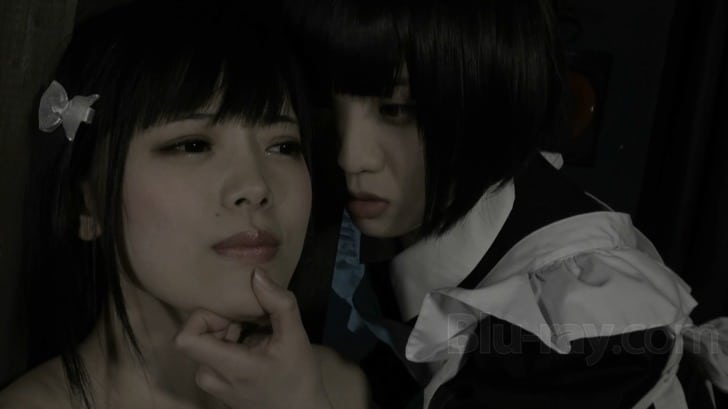Tokusatsu entertainment has continued to flourish in Japan since its rise in popularity in the 1950s and onward. Beyond movies and television, the roots of Japanese special effects production can be traced back to Japanese theatre, which has existed for centuries. For example, Kabuki has used trickery of the eye, such as in action setpieces, and the form of puppet theatre known as Bunraku tells its stories entirely through visual effects. The latter form of stage storytelling combined with well-established tokusatsu techniques would birth one of the most stylish and beautifully crafted short films in recent years: “Howl from Beyond the Fog.”
Buy This Title
on Amazon by clicking on the image below
A source of inspiration for the ambitious project is Ray Bradbury's short story “The Fog Horn.” The classic literature piece follows two men who have an encounter with a sea monster that is drawn to the foghorn of a lighthouse on an isolated island. This brilliant piece of science fiction writing is a powerful thematic piece on the underestimated power of nature, the negative impact technology can have, isolation, loneliness, and the bond created through companionship. The haunting tale would inspire other pieces of fiction to come, including Eugene Lourie's classic monster movie “The Beast from 20,000 Fathoms.” This influence, combined with a blend of tokusatsu filmmaking and puppet theatre, would be truly realized by the creative minds of filmmaker Daisuke Sato and veteran kaiju suitmaker Keizo Murase. The budget may have been significantly smaller than, say, that of a studio film, but this didn't stop the motivation and creative drive of the crew. On top of that, additional funds the independently made project received via Kickstarter made the production easier.
“Howl from Beyond the Fog” is set during the Meiji era in Kyushu, Japan. Following the death of his twin brother, a young man named Eiji returns home to a small village to live with his estranged mother Inami. As Eiji settles in, he meets a kind and lonely girl named Takiri, who is blind and secretly housed in the attic of his mom's home and revealed to be his cousin. The two begin to bond, and Eiji is then introduced by Takiri to a giant lake monster named Nebula, who she has befriended. Nebula, like Takiri, happens to be blind and, despite an imposing appearance, is a rather calm creature that only becomes aggressive when threatened. While all this is going on, the family property is threatened by a group of despicable developers looking to take their land away forcefully. Chaos ensues when these plotlines cross paths, and the seemingly gentle kaiju Nebula is angered and goes on a rampage.
Common storytelling beats are visited, but the stylish direction, solid screenplay, and tight pacing give this otherwise familiar plot its own identity. The film's atmosphere is excellent and gives off an eerie sense of dread and melancholic loneliness; the constant fog makes all of this ten times more effective. The human story is surprisingly emotional and becomes pretty heavy as it moves forward. In addition, there are plot twists as the narrative goes along, that further enhance the drama. Characters like Eiji, Takiri, and Inami are well-developed and relatable protagonists to connect with and have a sense of realism despite the fact they are portrayed by puppets. Equally as fantastic as the human characters is the film's kaiju, Nebula, or as the characters in the story refer to it, the Lake God. Besides a fantastic design and haunting roar, the creature has a sadness to its existence. The monster causes destruction but is merely an animal acting on survival instincts when angered, topped with the fact that the kaiju is blind. The beast's interactions with Eiji and Takiri show there is more to this creature than what may seem at first glance.“Howl from Beyond the Fog” succeeds in droves with themes such as loneliness, nature's power, the negative impact technology can have, isolation, and companionship. Also effective is the subject matter tackled, including sexism, racism, and social class inequality, issues prevalent during the historical period and still a problem in Japan today.
Helping enhance the drama of the human story is the on-point voice acting. Suguru Inou nails it by capturing a melancholic innocence with Eiji while also effectively conveying someone in shock by the wonders before him. Akane Kanamori's gentle nature as Takiri only makes her character all the more sad and sympathetic. Michiyo Ishimito also succeeds in bringing a level of tragedy to her performance as Inami. For the moments when Nebula is portrayed through suitmation, suit actor Tomohiro Matsumoto excels in making the kaiju feel massive, imposing, and otherworldly.
The technical side of the movie is outstanding. Daisuke Sato's cinematography from beginning to end is gorgeous, and the special effects are fantastic. The puppet work is well done, and the miniatures are beautifully detailed. As mentioned before, Nebula is a phenomenally designed monster, and the mix-matching between a suit and puppets is nearly seamless. Keizo Murase does not disappoint with the creation of the lake God. The highlight is Nebula's rampage, which is a wonderfully executed sequence. Sprinkled throughout the story are also beautifully done watercolor animation sequences as information about a character's backstory is revealed. The soundtrack by Chouchou is fantastic and gives the wonderful atmosphere an extra punch. One of the few setbacks is a questionable editing choice that comes in the film's climax with a music track that, while good, does not match at all with the scene in question and tonally clashes with the rest of the soundtrack. However, this imperfection does not sour the entire viewing experience.
Visually stunning and emotionally engaging, “Howl from Beyond the Fog” is a great short film. It shows that classic special effects techniques still have merits in a day and age where CGI is more heavily utilized than practical effects, and toy sales are prioritized over filmmaking. The more retro approach gives this production a unique art direction that separates it from much of its counterparts. Save for, say, films such as “Shin Godzilla,” “The Great Buddha Arrival,” and most recently “Shin Ultraman,” tokusatsu as a medium doesn't have the same unique visual distinction and artistic passion as it once did. Daisuke Sato and Keizo Murase are a superb creative duo and one that is still thriving. The two filmmakers plan to continue their partnership with Keizo Murase's upcoming directorial debut, “Brush of the God.” Best wishes to Sato and Murase in their current artistic journey.

















